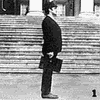Post by Digit on Mar 25, 2010 18:07:41 GMT -8
As for prononciation, Spanish is easy. It's pronounced exactly as it's spelled. Just something to note: if there's an accent above a vowel that's where you stress. Also, this letter here: ñ is pronounced ny. For example, mañana is pronounced man-yana, not manana. Oh, and if there's a double L (like in ella), it's pronounced with a y sound. H's are always silent. An E at the end of a sentance generally sounds like "ay" (resturaunte is pronounced rest-oo-ran-tay). G and J have an H sound. And I think that's all the irregularities, but don't quote me oth that.
Vowels sound a bit different. A is ah, E is eh (as in rest), I is e (as in tree), O and U are ooh. But don't quote me on the O/U thing. A good referance word is "idea". It's pronounced ee-day-ah.
Last, accents are important. If you don't put in an accent, you might get a totally different word. For example, él means he. el means the (masculine plural).
About vosotros: If your character isn't from Spain, don't use it. Spain has a slightly different type of Spanish than everywhere else. For non-Spanish characters, use ustedes. You know what, just don't make a character from Spain. I only know the Latin American version of Spanish. If someone else wants to reply with the tweaks to use for Spanish from Spain, thank you. Because the only Spain Spanish I know is vosotros. And I barely know that.
I know that was long, I apologise. I probably strayed from basic there, but whatever.
yo me
tú you (informal, sing.)
usted you (formal, sing.)
ustedes you (plural)
nosotros we
vosotros you (plural, informal)
él/ella he/she
tú your
Me llamo... My name is
Hola Hello
¿Qué tal? What's up?
¿Cómo estàs? How are you?
la comída food
la ropa clothes
los deportes sports
la falda skirt
morado purple
cuarto fourth/ room (literally quarters)
Now, on to some grammar...
There are four types of the word "the". But it's not too hard to figure out which goes where!
All nouns are either masculine or feminine. All nouns have a plural and singular form. The article and noun must agree in gender and number. (Note: Adjectives are that way too)
A general rule of thumb for gender, if it ends in O, it's masculine. If it ends in A, it's feminine. Of course, there's tons of nouns that don't end in either of those letters. You just need to memorize them, or look them up in a dictionary or translator or something. Most translators have the article in front of the verb when it's translated.
el is masculine singular. El lapíz
la is feminine singular. La falda
los is masculine plural. Los gomas de borrar
las is feminine plural. Las joyas
Those are the definite articles. There are also indefinite articles that work the same way, only they mean "a," like "a backpack." They're un, una, unos, unas.
Vowels sound a bit different. A is ah, E is eh (as in rest), I is e (as in tree), O and U are ooh. But don't quote me on the O/U thing. A good referance word is "idea". It's pronounced ee-day-ah.
Last, accents are important. If you don't put in an accent, you might get a totally different word. For example, él means he. el means the (masculine plural).
About vosotros: If your character isn't from Spain, don't use it. Spain has a slightly different type of Spanish than everywhere else. For non-Spanish characters, use ustedes. You know what, just don't make a character from Spain. I only know the Latin American version of Spanish. If someone else wants to reply with the tweaks to use for Spanish from Spain, thank you. Because the only Spain Spanish I know is vosotros. And I barely know that.
I know that was long, I apologise. I probably strayed from basic there, but whatever.
yo me
tú you (informal, sing.)
usted you (formal, sing.)
ustedes you (plural)
nosotros we
vosotros you (plural, informal)
él/ella he/she
tú your
Me llamo... My name is
Hola Hello
¿Qué tal? What's up?
¿Cómo estàs? How are you?
la comída food
la ropa clothes
los deportes sports
la falda skirt
morado purple
cuarto fourth/ room (literally quarters)
Now, on to some grammar...
There are four types of the word "the". But it's not too hard to figure out which goes where!
All nouns are either masculine or feminine. All nouns have a plural and singular form. The article and noun must agree in gender and number. (Note: Adjectives are that way too)
A general rule of thumb for gender, if it ends in O, it's masculine. If it ends in A, it's feminine. Of course, there's tons of nouns that don't end in either of those letters. You just need to memorize them, or look them up in a dictionary or translator or something. Most translators have the article in front of the verb when it's translated.
el is masculine singular. El lapíz
la is feminine singular. La falda
los is masculine plural. Los gomas de borrar
las is feminine plural. Las joyas
Those are the definite articles. There are also indefinite articles that work the same way, only they mean "a," like "a backpack." They're un, una, unos, unas.

 20
20
